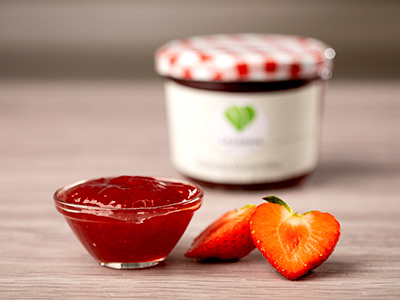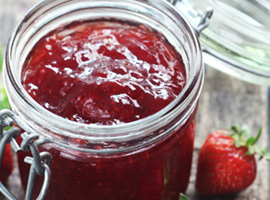Every year, nearly
900,000 tonnes of sucrose
are used in sweet spreads worldwide.
(Euromonitor, 2021)
Worldwide, nearly
1,700 new products
were launched in 2020.
(Innova, 2020)
In Germany, annually
2 kg of jams
are consumed per capita.
(DtGV, 2019)
Your challenges – our solutions

Lots of taste, few calories
Anyone who manufactures low-calorie spreads and jams is always faced with one question: How can the undesirable off-flavour that many sugar alternatives provide be avoided?
Consumers want “light” products, but in the best-case scenario, they should taste well as usual. The simple sugar allulose has both characteristics, full taste, and a low calories number: As a sugar, allulose, like sucrose, has no off-flavour. In one aspect, however, it differs significantly from household sugar, which is the calorific value. With only 0.2-0.4 kcal/g (there are 4 kcal/g in sucrose), the calorie content of products can be significantly reduced using allulose. This is possible because the human body cannot metabolize allulose – thus, it does not provide any energy.
You can find more information about the glycaemic index of allulose and the characteristics of the low-calorie sugar here.

Extra fruity and with a velvety mouth feeling
Jams are supposed to taste sweet, but fruity. Spreads with low sugar content and lots of fruit are popular with consumers; natural products are the trend. Allulose has the advantage that its sweetening power is less intense than that of household sugar. This creates a more intense fruit taste. The consistency also benefits from allulose: products are more velvety than conventional sucrose-based spreads.
Here you can find more information about allulose, for example about the insulin index.
Our solutions – your benefits
ALLULOSE




Your contact
Photo credits
Header: © Adobe Stock / shaiith
Content: © SAVANNA Ingredients, © Adobe Stock / MissesJones

